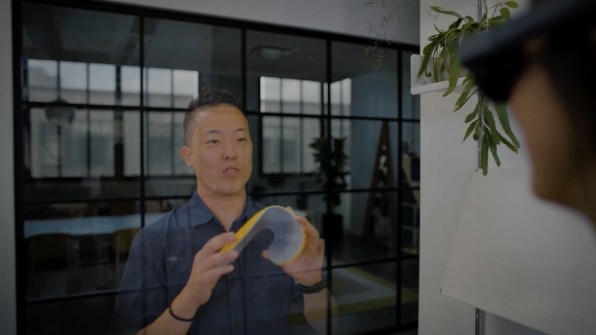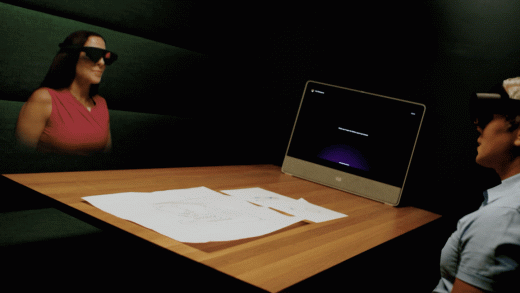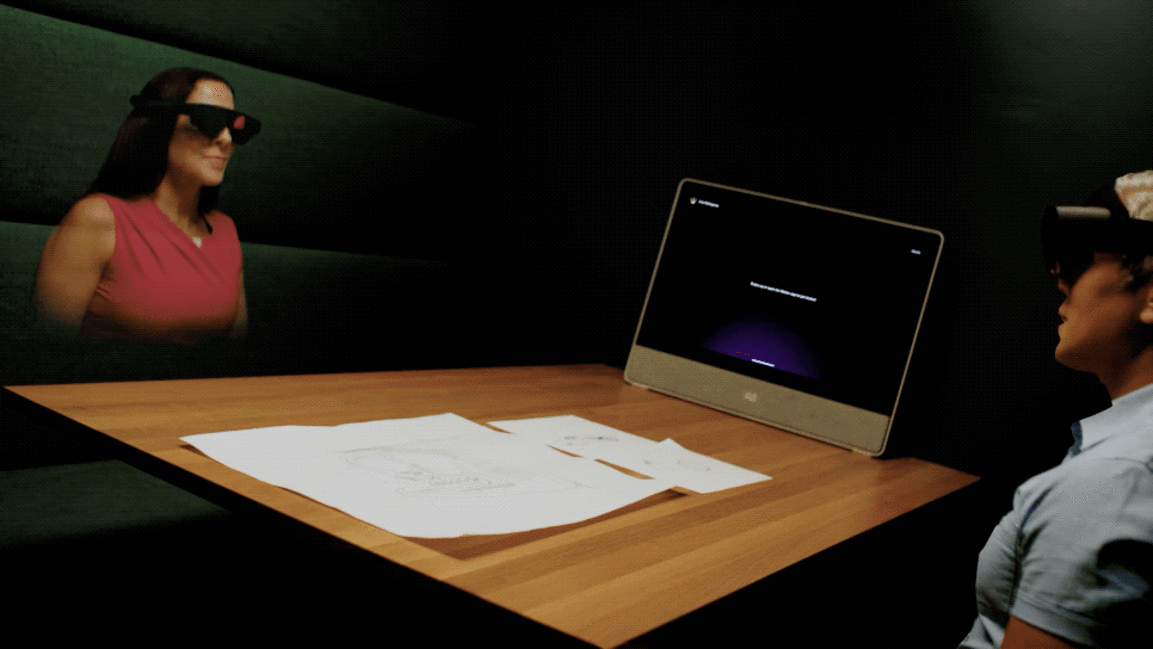Forget video calls: Here’s what it’s like to meet in holographic AR
Cisco will announce on Tuesday that it’s getting into the hologram business. At its WebexOne customer conference, it’ll describe a new service called Webex Hologram, which enables virtual meetings in augmented reality—with the participants represented as photorealistic holograms instead of cartoon-like avatars.
I got an early look at the new service and spoke to two of the Cisco executives leading the development of the service, which runs on headsets including Microsoft’s HoloLens and Magic Leap’s Magic Leap 1. The discussion started out as a conventional Webex call, but then I put on the HoloLens the company had sent me and the meeting went 3D.
I was sitting at the little bistro table in my kitchen, and suddenly Cullen Jennings, Cisco’s CTO for security and collaboration, showed up right across the table from me. His hologram, looked impressively lifelike.
And that’s exactly the point of Webex Hologram–to evolve remote collaboration from old-school video conferences where 2D participants are stacked up on a screen to meetings where it feels like you’re gathered around a table talking to real people.
“Since the beginning of time, people sat around in a circle and had a real conversation, and our current 2D video conferencing equipment where everyone’s just a flat surface has taken us a long way away from that,” says Cisco EVP and general manager of security and collaboration Jeetu Patel, who is leading the Hologram project. “I’m trying to figure out how to get back to that circle experience.”
Cisco’s experience also includes the ability to walk around a 3D object, point to it, discuss it, and, perhaps, practice repairing it. One compelling use case, Patel says, is when a company needs to discuss the fine details of a product with the far away contractor that will manufacture it. This sort of meeting usually involves a trip to Asia so that it can happen in person, a more troublesome proposition in pandemic times. Microsoft developed the ability to render a company’s product within the HoloLens; Cisco aims to add to the experience by making the people seem real.
“If we were an architecture firm and we’re doing architectural approval . . . you want to see the people at the same time, and you want to understand people’s reactions and how they’re dealing with the data,” Patel says.
In my kitchen, Jennings conjured up a torso-up model of a human skeleton. It appeared to hover over the table between us. I was able to grab it and rotate it, then grab two sides of it to adjust its size. The movements of my hands were being tracked by the cameras on the front of the HoloLens headset I wore. Jennings and I might have been two doctors in two cities discussing the bones or organs of a patient.
Working out the kinks
Patel says Cisco is in “very early development” with its holograms. A half dozen of Cisco’s Webex customers are now trying out the Hologram meetings. The company will soon expand its beta program to 50 partners, and later expand it to 250 customers before bringing Webex Hologram to general availability.
The technology still comes with some important caveats.

In my session with Jennings, I could see a convincing hologram of him, but all he could see of me was a set of digital hands and the vague notion of where I was sitting. To represent me as a hologram would have required a multi-camera 3D capture system set up in my kitchen to capture video of me from multiple angles. I could see Jennings’ hologram because he had a capture array set up at his end.
Patel says Cisco is working on the capture array part of the equation with its customers, who are trying to understand the best ways of capturing not only 3D images of meeting participants but also of the objects they might be discussing and collaborating on. The company isn’t saying how much the capture arrays might cost.
And if I’d had a capture array set up in my kitchen, the cameras would have captured me wearing the HoloLens, which made me look like a cyborg. My body language would be visible, but my eyes—the best window into my thinking—would be at least partially obscured by the light of the displays within the lenses of the HoloLens. If I was in a hologram meeting with my team, we’d all have to be wearing headsets in order to see each other (and any virtual models being discussed). So if the idea is to make meetings more natural and human, the headset itself would certainly detract from that. More compact, user-friendly mixed-reality glasses are coming, which might help a lot.
Cisco says that it hopes to identify a small number of use cases that will improve collaboration and save customers money. Its promotional materials show a single person, not wearing a HoloLens, holding a digital object and discussing it with a HoloLens-wearing person, presumably located far away. Even though this is something less than the “round table” ideal Patel spoke of, it may be good enough to help the participants work out design issues, make repairs, or settle on manufacturing solutions.
Even with these caveats, it makes sense for Cisco to be digging into holograms now. AR headsets will improve as will network speeds and cloud computing. Capture array prices may go down. In a few years, when real meetings of holograms become more possible, Cisco and Webex want to be ready.
(33)



